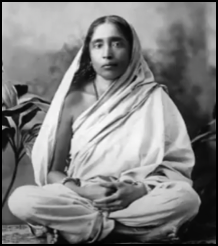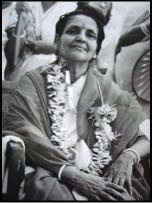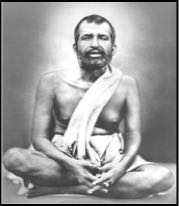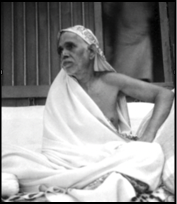



Spiritual-Teaching.org




“All things are possible to him who believes, they are less difficult to him who hopes, they are easier to him who loves,
and still more easy to him who practices and perseveres in these three virtues...
Believe me, count as lost each day you have not used in loving God.” Brother Lawrence
Letter # 6 - A Higher Power
“There can be a sudden unprovoked pull that takes one deep inside but more often than not this is a gratuitous act of Grace to spur on a seeker whether they are aware of it or not. It helps them to realise that there is a way forward. We can spend years bumbling along while underneath there is a general sense of discontent whose origin it is impossible to pinpoint. We know something is missing but what it is baffles us. It is when we receive such a magnificent demonstration of Grace that we can affirm…yes, now I have tasted that elixir that I always knew was there but could not touch let alone comprehend.”
Anyone who regularly sits in the Old Hall or walks around the Samadhi of Sri Ramana Maharshi does so with a purpose. The first few times that we sit quietly in the Old Hall are because we are attracted to the historical place where he resided for many years and we know it is a recognised place where people gather silently in a group. In general, for beginners as well as veterans, group meditation is by its dynamics much more effective than sitting alone.
And as well, we sit or walk around the Samadhi as an act of homage and surrender to that historical person whose earthly remains are present for anyone to honour. We do this, partly because others do it and partly because it helps harmonise our thoughts through the simple act of walking.
When Sri Ramana spoke about atma vichara he first indicated how one can withdraw from external disturbances, as well as the cacophony of mental static that besieges us, by asking who am I? and following to the root where that thought began and holding onto that space in which it arose. He then says that not only our external efforts will be effective but also we will be spontaneously pulled inside by an internal dynamism. This force is not in our conscious power to operate, rather it engages with us depending on our sincerity and willingness to let go of all the verbiage with which we indulge ourselves.
One may ask why this does not happen when doing normal meditation. Why only there in that Old Hall? Only there is that particular deed noticeable and patently active. It can and does happen elsewhere but generally not with the same characteristic degree of intensity or effectiveness in the initial stages of one’s personal meditation practice.
There can be a sudden unprovoked pull that takes one deep inside but more often than not this is a gratuitous act of Grace to spur on a seeker whether they are aware of it or not. It helps them to realise that there is a way forward. We can spend years bumbling along while underneath there is a general sense of discontent whose origin it is impossible to pinpoint. We know something is missing but what it is baffles us. It is when we receive such a magnificent demonstration of Grace that we can affirm…yes, now I have tasted that elixir that I always knew was there but could not touch let alone comprehend. This moment initiates the search and gives us the initial impetus to break out of our self-inflicted straight jacket of opinions and set beliefs. We were like vehicles driving on a highway created by our inherent propensities, family, culture, education and history with no end in sight except that dictated by the highway. When we notice an unusual sunshine breaking out at daybreak or a majestic beautiful mountain beckoning us, we desire to leave that highway but we can’t without a tremendous struggle. Grace provides us with the boldness and more importantly, the energy to break free of historical necessity, family and social pressures.
It is that very same Grace that pulls us within. The beauty of Sri Ramana’s path is he has shown us the way with his own life that began its momentous destiny at Madurai when he confronted death. We are merely following in his footsteps. It is a trusted and well-marked path. Though hints about it can be found in the Upanishads it is essential for a new path meant for this age where mental acuity is dominant and encouraged in so many aspects of life.
In those first months, I did sit in the Old Hall but not that often and the realisation of how important it was did not come until much later. Those months were relatively uneventful. When I did sit, it was a hard slog. There were a few regular sitters and I would surreptitiously check on how long they sat compared to my efforts. Probably they were doing much the same, to bolster their confidence that they were good sitters! There was one Telugu man who sat for long hours and there was a general wonder and envy that he could put in the time. At night, after his stint, he would leave the ashram and smoke a well-earned cigarette in the small shop opposite. One didn’t begrudge him the indulgence.
The Old Hall was sparsely populated in those years and the wall clock ticked away the moments, although it appeared to take a particular delight in slowing down when I would open half an eye to check to see how much time had passed. There was one ceiling fan near the couch as an allowance for the comfort-minded. In later years when more people started to sit another fan was installed at the other end of the hall and thus the fan wars began. Whether the fan was too fast or too slow there was always someone who decided to change the setting. I remembered one day sitting there and a lady came in, went straight to the fan control near the couch, and decisively switched the mechanism to the highest slot, then calmly sat down in front of the couch and entered her own satisfied, cool world. I could have whacked her or better still got up and changed the speed, but didn’t. Grumbling to myself out of weakness and the wish not to create a scene, I persevered, which in the end is all we can do whatever the circumstance. In the end, I forgot about the fan speed and the rush of wind. It just was not worth it.
There was much discussion among us newly minted veterans about all the long-term ashram residents who would occasionally come into the old hall, prostrate to the photo, and benignly and quickly walk out. Why didn’t they sit? What was the matter with them? With some degree of self-righteousness, we felt to be the chosen ones. It was not long before we began to do the same thing. For after the preliminary slog of sweat and tears, we each began to discover that the rhythm initiated in the Old Hall began to flow even when we were not there. Our vessels, our material organisms and in particular, our minds could only take in so much before a period of digestion was required. It was not possible to sit all day without repercussions. The nerves would become taut and a subtle hangover would predominate. Just as a person who stuffs themselves with food must stop at some point to allow their body to process the nutrients so too with meditation. Those who refused to listen to the signs could become odd in their behaviour. A normal general result of continued meditation was some type of negative reaction in the body, a physical illness in which toxins that the body and mind had stored in the past were eliminated.
What I learned in those first months was that nothing happened fast, that it was a long, slow drawn-out process which was as much for our own safety as it was the natural course of events. For after all meditation changes not only our minds and hearts, it also affects the nervous system and our gross physical body. With time we become lighter and clearer in our minds. Like a chrysalis, we slowly shed our gross habits and inclinations. Anyone who was in a hurry would soon crash or become dispirited.


